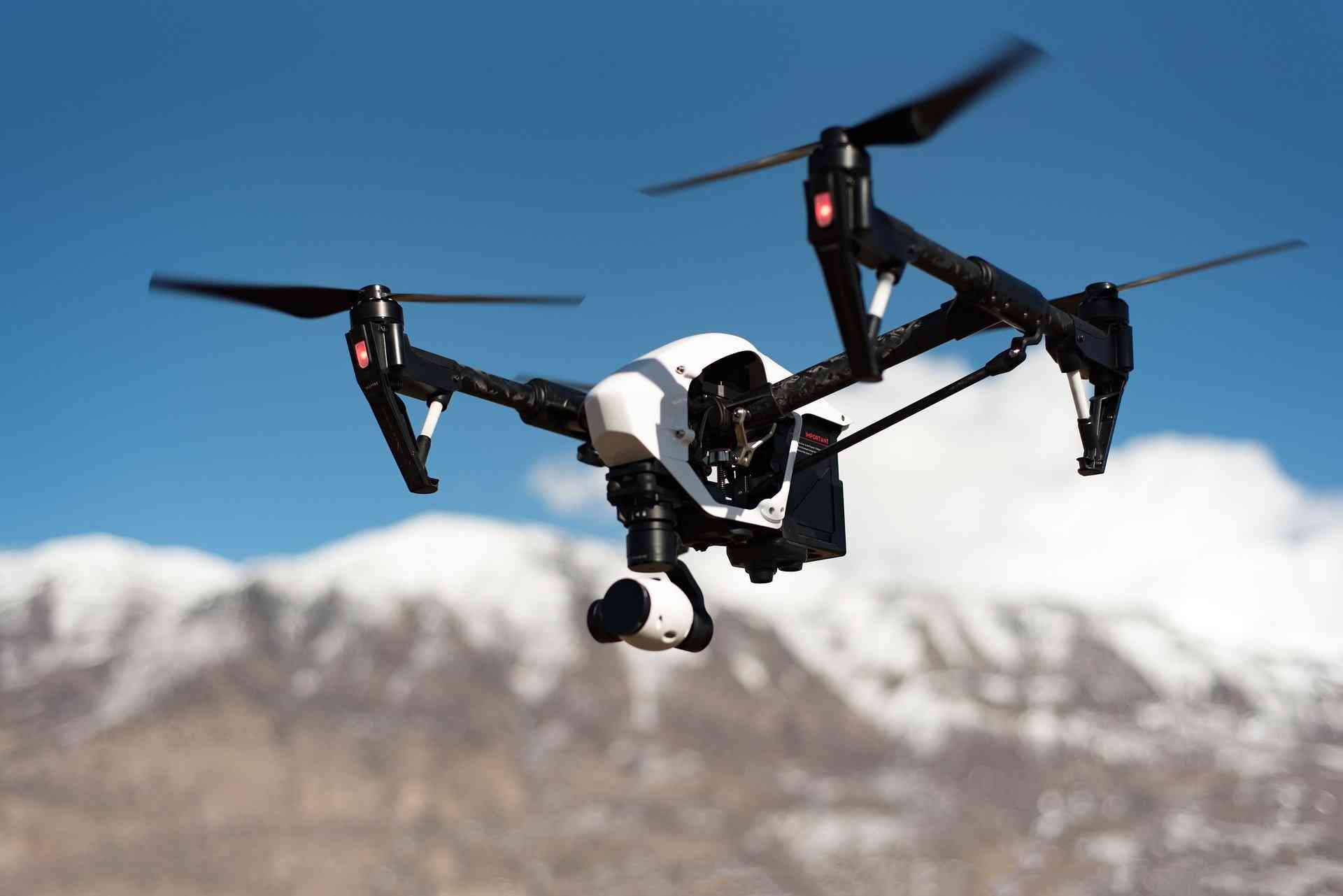
ARTIFICIAL intelligence (AI) refers to technologies, which enable computers and related gadgets (cell phones, drones, etc) to solve problems just as good as human beings.
Examples of AI include the processes used by social media (Twitter/X, Facebook, LinkedIn, Instagram, etc) to identify a user's preferences, in order to provide the user with content, which is relevant to them.
This also includes a friend recommendations, which are suggested by social media. Automatic customer service consultants (chatbots), which provide automatic responses to customer enquiries on WhatsApp, Facebook and email, also operate based on artificial intelligence.
More examples of AI include; self-driving cars, such as Tesla, publicly-installed cameras with facial recognition capabilities, drones, which can automatically detect and report on the condition of crops in agriculture, or (drones), which can be assigned to identify terrorists and automatically strike them, virtual internet assistants such as “Siri” and “Alexa”, etc.
If the Zimbabwean government and the local private sector are able to increasingly embrace AI, it is quite possible that the benefits to be realised will include convenience for citizens and economic growth.
Opportunities for govt adoption
There are a number of areas in which government can adopt AI within 1-3 years. Below, some of the areas are described, along with the benefits to be enjoyed upon their adoption.
The country's national borders need AI-powered management systems in order to address some of the major challenges that are experienced there.
- Harvest hay to prevent veldfires: Ema
- Public relations: How artificial intelligence is changing the face of PR
- Queen Lozikeyi singer preaches peace
- Public relations: How artificial intelligence is changing the face of PR
Keep Reading
Installing a network of AI-powered cameras, motion sensors and drones at the borders will enable real-time identification of smuggling and other criminal activities along the border.
In 2020, the Zimbabwe National Chamber of Commerce outlined that the country was losing US$80 million each month, due to porous borders and inefficient customs systems.
The amount translates to about US$1 billion each year. When the installed cameras detect human movement in areas, such as bushes or travel paths, which are not assigned for the flow of legal traffic, they can immediately archive (store) the video recordings of such activities, whilst they concurrently alert the authorities in real-time.
The public institutions, which can implement this project include; Zimbabwe Revenue Authority, Zimbabwe Republic Police, Zimbabwe National Army, intelligence personnel, or even the Zimbabwe Anti-Corruption Commission.
In Uganda, the national revenue collector, is also contemplating using drones to prevent smuggling along their border. Depending on the level of the project’s success, the Zimbabwean government might realise between US$500 million to US$1 billion in increased revenue, due to the plugging of smuggling and other leakages of revenue at the borders.
The extra revenue should be useful for paying the country's debt arrears with international financial institutions and to install more essential infrastructure, such as power stations and water-harvesting facilities, which can mitigate against issues such as climate change.
Such technologies (drones, cameras and motion sensors) can also be used in conservation efforts, in order to prevent poaching and other dangers to wildlife and their habitat (forests).
In healthcare, clinics and hospitals may adopt the automatic ordering of prescription medication, such that, there will not be mishaps or delays when patients visit to collect their drugs.
To make the dispensary of medication more innovative, hospital patients may even be given an option to receive deliveries of their medications at their homes.
They can even be requested to pay a small amount of money for the convenience. With such processes, new jobs will be created in warehousing and logistics, among other sectors.
Health workers will also have a reduced burden and be able to attend to fewer visitors at their facilities in a more efficient manner. Visiting patients may also be made to recite (speak aloud) their symptoms to an automatic transcriber, which will record in written format, the problem that they are having.
This will then be used by the doctors as they add the information to the patient's medical record and file it automatically. The technology can also be used to assist the doctor with identification of possible diseases and useful medication can that is available at the hospital, which can be offered to the patient.
Of course, the doctor will be obliged to double-check the analysis and recommendations provided by the AI, so that he can quickly identify when it gets things wrong.
It is crucial to emphasise that, because AI does get things wrong at times, a situation which some refer to as “AI hallucination”. The use of AI to assist with the diagnosis of sicknesses and required medication will also result in efficient service.
This will benefit both the doctors (through a reduced burden) and patients (through quick and reliable service). In Scotland, the shortage of radiographers in its third-largest city of Aberdeen has led to trials being carried out to test the ability of AI to analyse mammograms (X rays of women's breasts).
As soon as an X-ray is taken, the technology automatically sifts through the available X-ray images and sets aside any of them (images), which show the possible presence of unusual growths (early-stage breast cancer).
As of June 2023, the technology was already positively picking up early-stage breast cancer, with patients identified to have issues, being called back for closer manual examination by doctors. If the trials turn into a fully-fledged operation, then the technology is expected to reduce the burdens of radiographers in Scotland whilst saving lives.
It will also be beneficial for Zimbabwean medical and IT professionals to carry out research in such areas. In order to encourage such innovations, the Zimbabwean authorities may make a commitment to fund medical research connected to AI.
Innovative local medical AI products may also be adopted for use in local clinics and hospitals.
Combining AI with “blockchain” can also be used to limit corruption, whilst ensuring the maximum efficiency of business processes.
Technologies such as “blockchain” can immediately provide a receipt (or invoice) for transactions as they occur, to various stakeholders, including auditors and supervisors of the transacting employees.
For example, when money is paid out to a supplier, blockchain can enable an immediate distribution of the transaction record to the employee, who made the payment, their supervisor, the accountants, who are responsible for auditing the clinic (or hospital) and also an officer at the Zimbabwean Anti-Corruption Commission (if there is a corruption crisis at the hospital).
Once a transaction is settled via blockchain, chances of corruption would have been greatly limited.
Thereafter, AI can be used to choose the best shipping (delivery) methods for goods purchased, etc.
It is also important to note that blockchain technology can be used in other government departments and Ministries, besides healthcare.
To solve the problem of littering and garbage in the country’s city centres, AI-powered cameras can be installed throughout the cities’ Central Business Districts (CBDs).
In conjunction with “environmental wardens”, who may be installed along the streets, the technology can be used to apprehend (arrest) people who litter (who throw trash) so that they are either cautioned, fined or given a custodial sentence (imprisoned), depending on their confirmed frequency of committing the same offence.
This means that when someone throws rubbish on the street, an environmental warden can immediately apprehend them. If the offender is unwilling to cooperate, the AI-powered cameras can then be used to show the offender the evidence of the violation (offense).
Once more, new jobs will be created, since the country's municipalities do not use “environmental wardens” for enforcing cleanliness in the cities, as yet.
The same technology can also be used to apprehend thieves and other violators of city bylaws, such as irresponsible drivers, etc.
In education, the government may strive to have all official textbooks at primary and secondary school level, uploaded online, in the country's different official languages.
Once that happens, an innovation may be developed to enable students, who are connected to the internet, to ask questions to a virtual (AI-powered) teacher online. The educational content (online textbooks) can also be linked to virtual assistants, such as Google’s “Alexa”, Apple's “Siri” or even the trending “ChatGPT”.
This means that when students ask their own unique questions, the AI will be able to respond to them in a language and manner in which they (students) understand and within the parameters of the uploaded textbooks.
Such innovations will be able to improve the quality of education in the country, such that students with fewer or less-competent teachers can be able to still acquire knowledge and pass their exams.
Opportunities in the private sector
In the private sector, AI can be used in mining, agriculture and other relevant fields. In mining, AI-powered drones can be used to survey the geology and topography of an area, in order to determine the likelihood of the occurrence of particular types of mineral deposits. This makes prospecting for minerals much easier.
AI can also be used in the form of sensors in the ground, which can predict the likelihood of a landslide or even a mine collapse.
In the case that a mine accident happens, AI can be used in the form of humanoid robots, which can go into mine shafts to take note of the severity of the damage made and possibilities for rescuing the accident victims.
To speed up such investments, the government may gift a few miners each year, with such technologies.
Once their (the technologies) effectiveness is understood locally, it is likely that they will be widely adopted, leading to greater mineral revenues and reduced frequencies of mine accidents.
In agriculture, AI is already being used locally, in the form of drones and satellite images, which recommend farmers to offer extra attention when there is the identification of a crop disease, drying or poor health of crops in parts of the fields, which are inaccessible on foot.
In this area, the government may commit to gift such drones to farmers, who show the potential for transitioning into commercial success.
Conclusion
The time is right for the government to adopt AI and incorporate it into public services and other useful systems (procedures). The private sector will also benefit if it imitates. This is in order to maximise the benefits, which AI offers.
Since AI usually reduces costs, its adoption by government will likely bring immediate wins, such as an increase in economic growth.
Citizens and government employees will also enjoy better welfare and higher efficiency of transactions, through its widespread adoption.
Regulation will also be essential in order to address some dangers of AI, such as massive job cuts in both the public and private sectors, the spreading of fake and nationally disruptive news through AI, etc.
It is also encouraging that the government was reported to be developing an AI policy, in April (2024).
If the recommendations offered in this article are embraced, then the country can minimise the adverse effects whilst maximising the benefits of AI.
- Tutani is a political economy analyst. — tutanikevin@gmail.com










